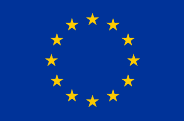
Safe non-food consumer Products in the EU and China
This factsheet applies to cables for use in electrical installations and electrical products with insulation made from polyvinyl chloride (PVC) or rubber.
This includes flexible and non-flexible cables, cables for indoor use, cables for outdoor use, cables with different number of conductors, cables with special fire safety properties and others.
The most common risks identified in this product sector are set out below.
1. Electrical risks
2. Thermal risks:
This is a list of examples of common risks. However, the manufacturer has to carry out an assessment of the cable that covers all relevant risks that may be associated with the product and actions taken to mitigate these risks where possible. A general definition of risk and its relationship to hazards can be found in the factsheet on Risk management.
Specific examples of measures taken against dangerous cables offered for sale in the European Union are available on the Safety Gate website. Type ‘cable’ into the free text search box (but without the quotation marks) and select the ‘electrical appliances and equipment’ Product Category to view notified examples. A better understanding of mistakes made in the safety assessment on the cable, or its manufacture can help avoid their repetition.
Main applicable legislation
These products are governed mainly by the Low Voltage Directive (LVD).
The Directive lays down the safety criteria that all cables must meet before they can be marketed in the EU. Cables must comply with the essential safety requirements set out in this Directive. More specific details can be found here.
In addition, if the electrical appliance and equipment is capable to communicate wirelessly (e.g. incorporates Bluetooth or Wi-Fi), it should meet the requirements of the Radio Equipment Directive.
Please also check the factsheet for Power Supplies, Chargers and Adaptors for safety requirements for the external power supply.
All other products (with a voltage rating below 50 V AC or 75 V DC) and risks not covered by the LVD, are governed by the General Product Safety Directive (GPSD). The Directive lays down that only safe consumer products can be marketed in the EU. Cables must comply with the general safety requirement set out in this Directive. More specific details can be found here.
“European standards” exist in the EU for cables. Cables complying with these standards are presumed to be in conformity with the essential safety requirements set out in the Low Voltage Directive if the standards are referenced in the Official Journal of the European Union (OJEU).
It is important to note that the latest edition of the standard referenced in the OJEU (including any amendments) applies.
Note: The full text of European standards can only be purchased from a national standardisation body. The following site of CEN CENELEC (the European standardisation organisation) provides links to the national standardisation bodies’ websites. In addition, the China Standards Information Services Network can be used to access European standards.
Cables are governed by international IEC standards.
The following standards apply to cables depending upon the type of insulation:
The IEC 60227 series
This series of standards describes safety requirements to polyvinyl chloride insulated cables of rated voltages up to and including 450/750 V.
The IEC 60245 series
This series of standards describes the safety requirements to rubber insulated cables with rated voltages up to and including 450/750 V.
However, the standard series covers other safety issues and manufacturers are strongly advised to consult the whole standard.
The following summarises some further key applicable laws:
The following are obligatory:

Safety warnings and instructions are obligatory for many types of cables to draw attention of users to risks and how to avoid injury.
To ensure that manufacturers produce only safe cables, there are also a range of general requirements to be fulfilled. These are explained in the following factsheets and need to be read in conjunction with this factsheet:
You may also visit the SPEAC ACADEMY to learn more about the EU Safety requirements.
The provided information was updated in 2022. Please note that some of the provided information could change during possible subsequent revisions of legislation, standards, and guidance documents. For any updates of official information on the EU product safety rules, please follow the Link to the webpage of the European Commission.
This document was produced with the financial support of the European Union. Its contents are the sole responsibility of SPEAC project and do not necessarily reflect the views of the European Union.

This website was created and maintained with the financial support of the European Union. Its contents are the sole responsibility of SPEAC project and do not necessarily reflect the views of the European Union.